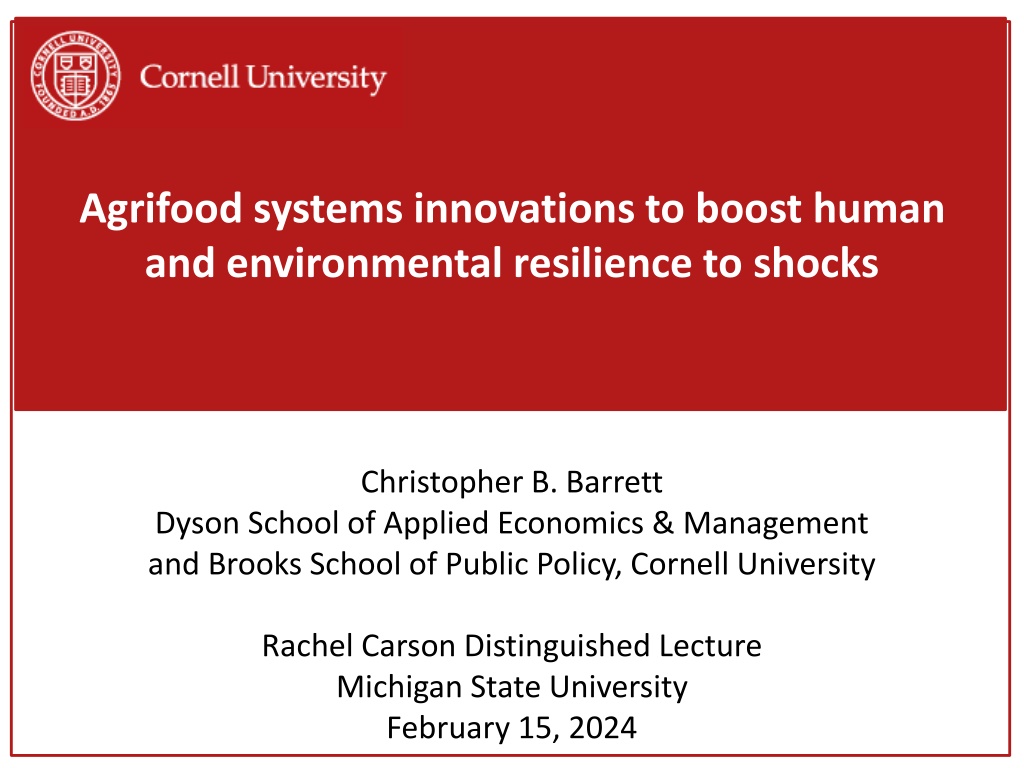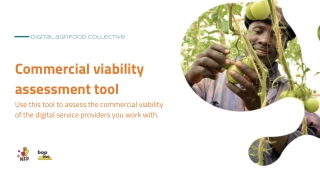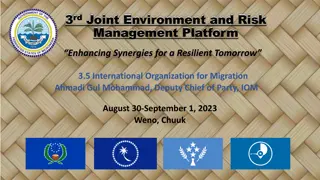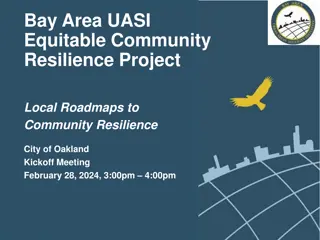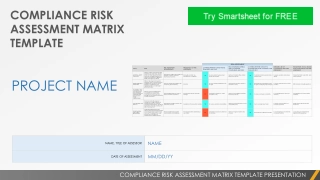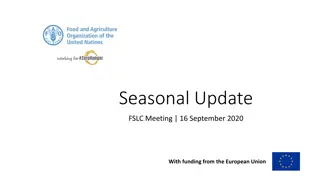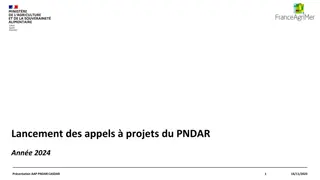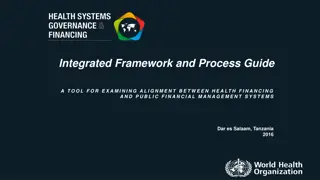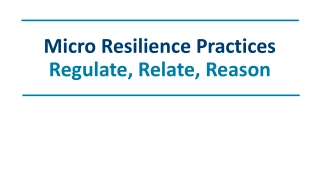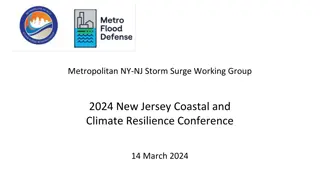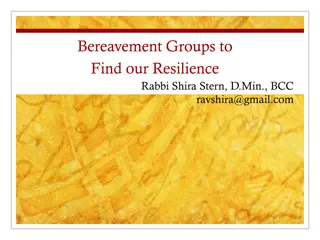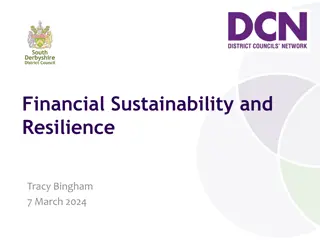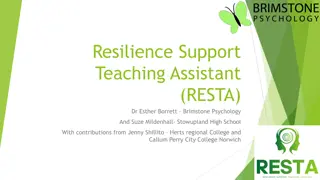Enhancing Agrifood Systems for Resilience Amidst Shocks
Explore how innovations in agrifood systems can bolster human and environmental resilience against various shocks like climate change, conflicts, pandemics, and more. Emphasis is placed on addressing poverty traps, understanding natural vulnerability to shocks, and transforming agrifood systems for a sustainable future in the face of mid-21st-century challenges.
Download Presentation
Please find below an Image/Link to download the presentation.
The content on the website is provided AS IS for your information and personal use only. It may not be sold, licensed, or shared on other websites without obtaining consent from the author. Download presentation by click this link. If you encounter any issues during the download, it is possible that the publisher has removed the file from their server.
Presentation Transcript
Agrifood systems innovations to boost human and environmental resilience to shocks Christopher B. Barrett Dyson School of Applied Economics & Management and Brooks School of Public Policy, Cornell University Rachel Carson Distinguished Lecture Michigan State University February 15, 2024
Must build resilience to rising catastrophic risk exposure The world and especially low-income, rural communities face increasing risk of climate/conflict/pandemic/price/other shocks. Source: J.Masters, Yale Clim. Conn. 2022
Risk is especially important w/poverty traps Poverty traps increasingly understood as arising due to catastrophic risk exposure and/or the experience of uninsured shocks in systems with a low-level (often multiple) stable states. poverty line Resilience exists when people and systems can absorb or quickly recover from potentially catastrophic shocks and stressors.
Natural environment is similarly vulnerable to shocks Climate, biodiversity, forests, soils, disease ecology, water similarly subject to multiple stable states and thus vulnerable to shocks. Agrifood systems (AFS) especially important sources of shocks. Source: Rohr et al. Nature Sustainability 2019 Source: https://www.globalagriculture.org/report-topics/water.html Source: Yang et al. (in review)
Building resilience requires AFS transformation Agrifood systems are a common denominator to today s polycrises. Building resilience will require AFS transformation. Hard but feasible. Overcame similar threats in 1930s-60s w/a doubly progressive strategy: progress through science + solidarity w/poor. Resurrect that strategy, but tailor to current needs. Source: IRRI Yield of maize (tons per hectare) and percentage area sown to hybrid seed, USA, 1900 70. Source: Byerlee (2020)
Define objectives correctly for mid-21st century Priorities are no longer need increasing yields / caloric availability. Need sustainable TFP growth and induced demand shifts to build healthy, equitable, resilient and sustainable AFS. Bundle technological, policy and institutional innovations: - Solutions are never just technical - Populations are never homogeneous - Political economy requires coalition building
Example 1: Improved humanitarian response For decades, global response to humanitarian disasters was to ship surplus food from US/Canada/Europe: slow, inefficient, often culturally inappropriate, sometimes harmful to recipients. Past 15 years big shift towards modern EWS, cash-based assistance using local foods/markets. Supplement w/novel therapeutic foods. Photo credits: Devex, Edesia
Example 2: Index-based livestock insurance (IBLI) Poverty traps exist in the arid and semi-arid lands of Kenya/Ethiopia. Catastrophic herd loss risk due to major droughts is the major cause of these dynamics. Puts a premium on drought risk management, both for individuals and for society. Sources: Lybbert et al. (2004 EJ) and Santos & Barrett (2011 JDE, 2019 UCP/NBER volume) on Boran in s. Ethiopia. Barrett et al. (2006 JDS) and Chantarat et al. (2017 WD) in n. Kenya.
IBLI: The threat of climate change Seems worsening. Pastoralist systems adapted to weather shocks. But is it resilient to a shift in climate? Many models predict increased rainfall variability (i.e., increased risk of drought). Herd dynamics differ b/n good and poor rainfall states, so change w/drought (<250 mm/yr) risk. Source: Barrett and Santos (Ecol Econ 2014) In southern Ethiopia, in expectation, doubling drought risk leads to system collapse in the absence of any change to prevailing herd dynamics.
Why IBLI? Standard responses to drought Standard responses to major drought shocks: 1) Post-drought restocking (futile at low levels, Santos & Barrett 2019 NBER) 2) Food aid (slow, expensive, can reinforce sedentarization, lots of excess mortality due to US policies Nikulov et al. PLoS ONE 2016) 3) Conventional insurance (infeasible/unaffordable) Core issue: the social protection paradox: Must stop collapses into poverty else overwhelm social protection programs for poor (Ikegami et al. 2019 NBER). Reduced protection feeds resource overuse and conflict, igniting a vicious cycle of reinforcing feedback.
Original IBLI product design Use near-real-time Normalized Difference Vegetation Index (NDVI) MODIS satellite data to define losses based on historical NDVI-mortality relationship. For expected losses >15%, seasonal payment from reinsured insurer. 1 year contract coverage 1 year contract coverage LRLD season coverage LRLD season coverage SRSD season coverage SRSD season coverage Jan Feb Mar Apr May Jun Jul Aug Sep Oct Nov Dec Jan Feb Jan Feb Mar Apr May Jun Jul Aug Sep Oct Nov Dec Jan Feb Sale period For LRLD For LRLD Sale period Period of NDVI observations for constructing LRLD mortality index constructing LRLD mortality index Period of NDVI observations for Period of NDVI observations For constructing SRSD mortality index mortality index Period of NDVI observations For constructing SRSD (Jensen, Barrett &2014) Sale period Sale period For SRSD For SRSD Predicted LRLD mortality is announced. Indemnity payment is made if IBLI is triggered Indemnity payment is made if IBLI is triggered Predicted LRLD mortality is announced. Predicted SRSD mortality is announced. Indemnity payment is made if IBLI is triggered Indemnity payment is made if IBLI is triggered Predicted SRSD mortality is announced. Imperfect product, but worked largely as designed, with big impacts. Marginal impact on income or MUAC is 6-45x that of cash transfers! Scaled out to Kenya, Djibouti, Ethiopia, Mauritania, Somalia, Zambia. See Jensen et al. Cambridge Univ. Press IBLI book in press
Example 3: Schistosomiasis in Senegal Ag dev t can aggravate infectious disease burdens. Schistosomiasis affects >240m globally (>800m at risk). Great example of a poverty-disease trap. Impedes child cognitive/physical dev t via anemia, morbidity. Disrupts work/school attendance. Suppresses immunoresponse. Deworming (MDA of praziquantel) has high reinfection rates. Biocontrols (e.g., prawns) largely ineffective. Source: Colley et al. The Lancet 2014
Example 3: Schisto in Senegal Remedy: clear snails preferred habitat: submerged Ceratophyllum demersum. It works! Snails and infections (esp. S. mansoni) sharply reduced. Use the biomass as compost: Private B/C =[2.7,4.0]; Public B/C=[3.1,8.8]
Plenty innovations are on the way! Agricultural innovations: - Biofortified crops to help boost micronutrient access for poor. - Stress-resistant crops to cope w/flooding, drought, heat, pests. - Livestock feeds to reduce methane, food-feed competition - Upcycling wastes for fertilizer/feeds New Genomic Techniques raise likelihood and accelerate rate of breakthroughs! Photo credits: Genetic Literacy Project, Mike Gore, Alexander Mathys, Sanergy, Andrew Simons
Post-farmgate options especially promising Decoupling food production from land is increasingly culturally, economically, technologically feasible. Crucial for climate, infectious disease control, healthier/safer foods. Photo: Betterindia.com Photo: Beck Deifenbach/Reuters Profit-seeking, risk- reducing non-farm companies can drive change w/enough regulatory oversight and stakeholder pressure. Improve reformulation/fortification. Learn the lesson of rennet. Photo: Gerry Machen/Creative Commons Manage rural transitions proactively to build rural livelihood opportunities: farm carbon, solar, wind and wildlife; CEA in idle, low-cost structures. Photo credits: Photo: Wallace Woon (Straits Times), Betterindia.com, : Beck Deifenbach/Reuters, Gerry Machen/Creative Commons
We can build human and environmental resilience to shocks, even in low-income rural communities - 1. Requires renewed commitment to innovation, in both technologies and institutions/policies 2. Shift focus from calories/yields to HERS indicators 3. Devote more effort to mid-stream/non-farm options 4. Social protection and enhanced risk management are handmaidens of innovation and progress.
Thank you for your time, interest and comments! Background literature available at https://barrett.dyson.cornell.edu/ Or email me at chris.barrett@cornell.edu
